Abstract
1. The dependence of kappa-opioid agonist-induced diuresis, upon an intact and functional adrenal medulla in conscious rats, was investigated in order to test the hypothesis that the diuresis is mediated by a blood-borne 'diuretic factor', of adrenomedullary origin, released by kappa-opioid receptor stimulation. 2. Confirming previous observations, adrenal demedullation significantly attenuated diuretic responses to the kappa-opioid agonists U50488H, ethylketocyclazocine (EKC) and tifluadom, but did not affect basal urine output, furosemide-induced diuresis or the antidiuretic response to the mu-opioid agonist, buprenorphine. Naloxone abolished U50488H-induced diuresis, confirming an involvement of opioid receptors. 3. Transfusion studies established that blood, from intact rats treated with U50488H, induced diuresis in intact and demedullated recipient rats, whether or not the recipients had been pretreated with naloxone. However, blood from demedullated rats treated with U50448H was unable to induce diuresis when administered to intact or demedullated recipients. 4. It is concluded that kappa-opioid agonist-induced diuresis is dependent upon an intact and functional adrenal medulla and appears to be mediated by a blood-borne 'diuretic factor' of adrenomedullary origin.
Full text
PDF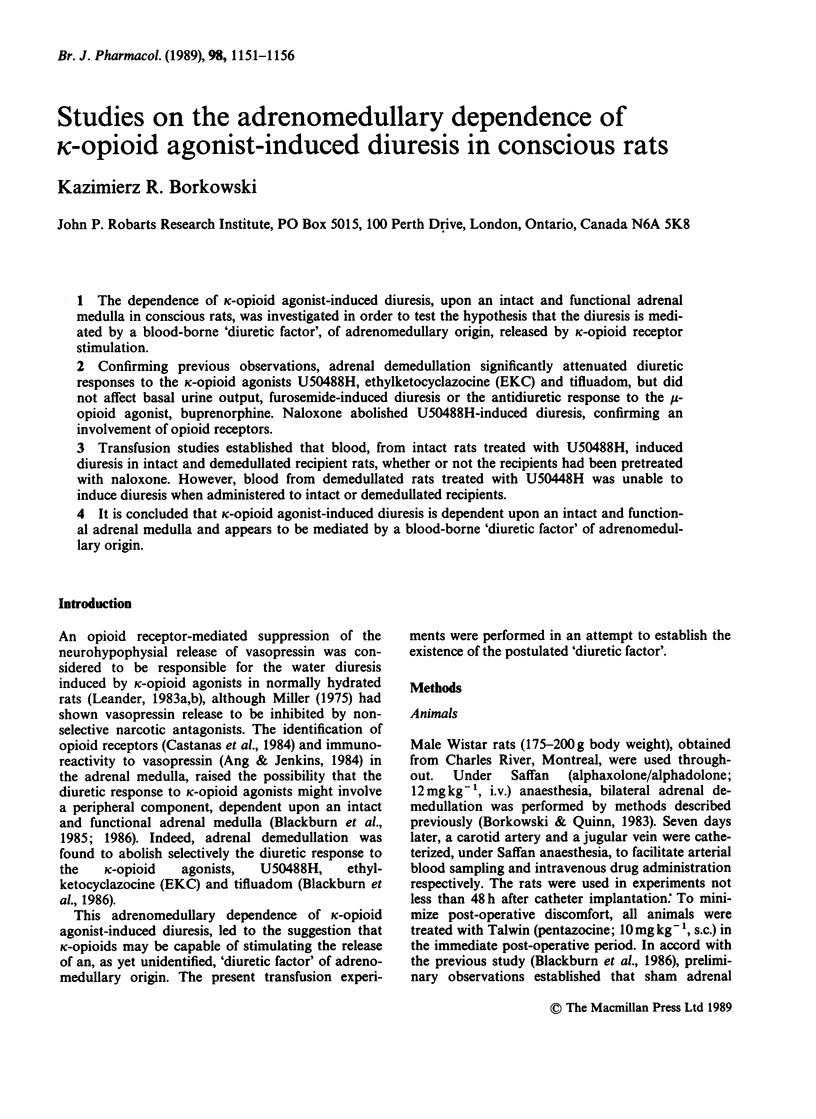
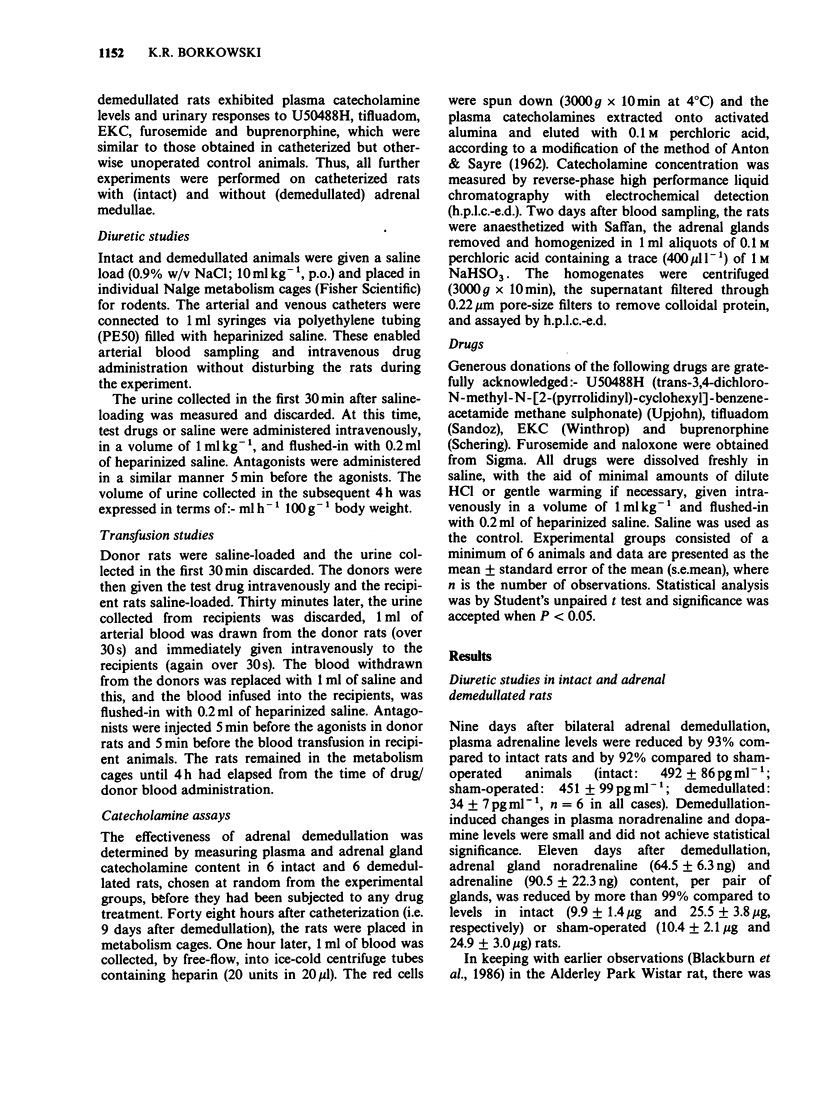
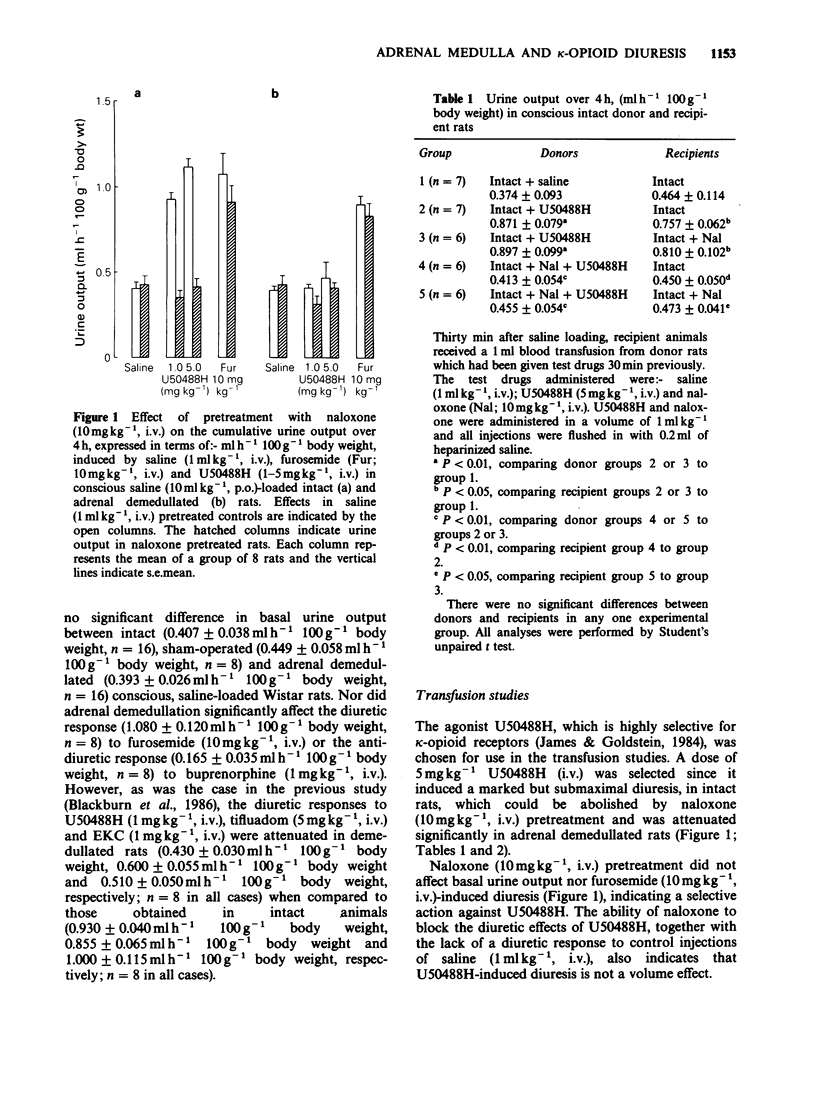
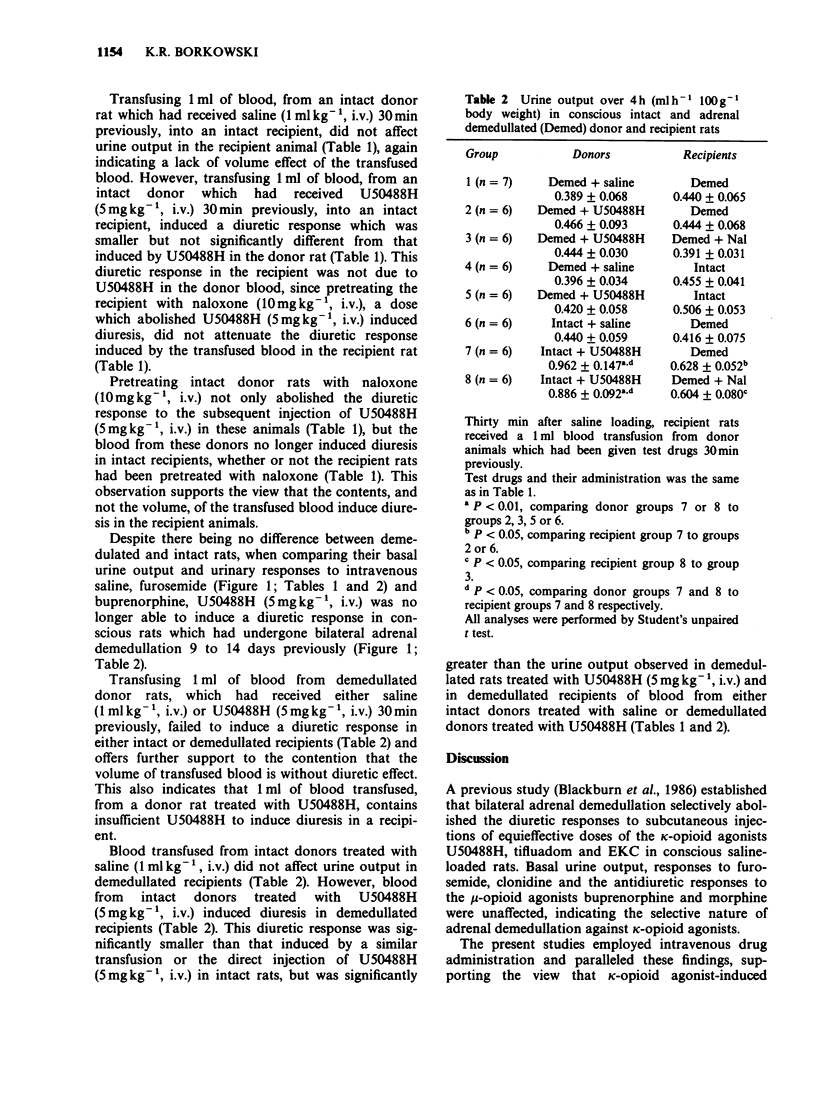
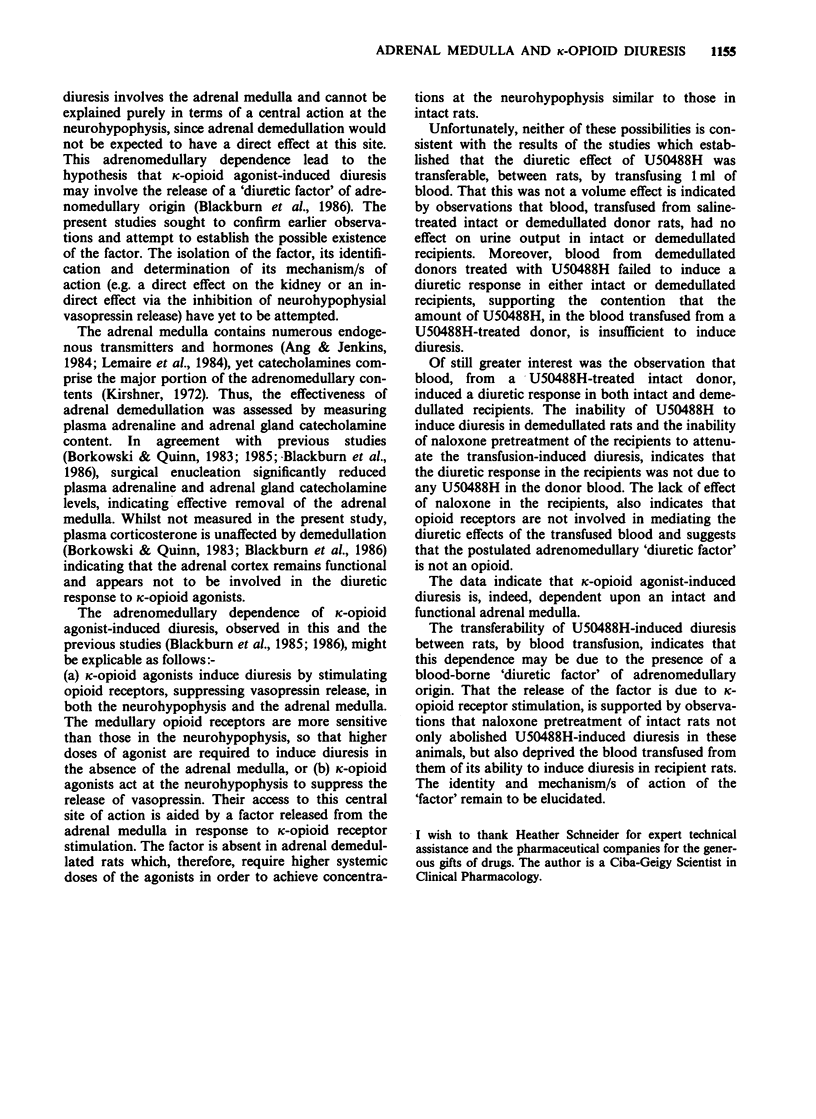
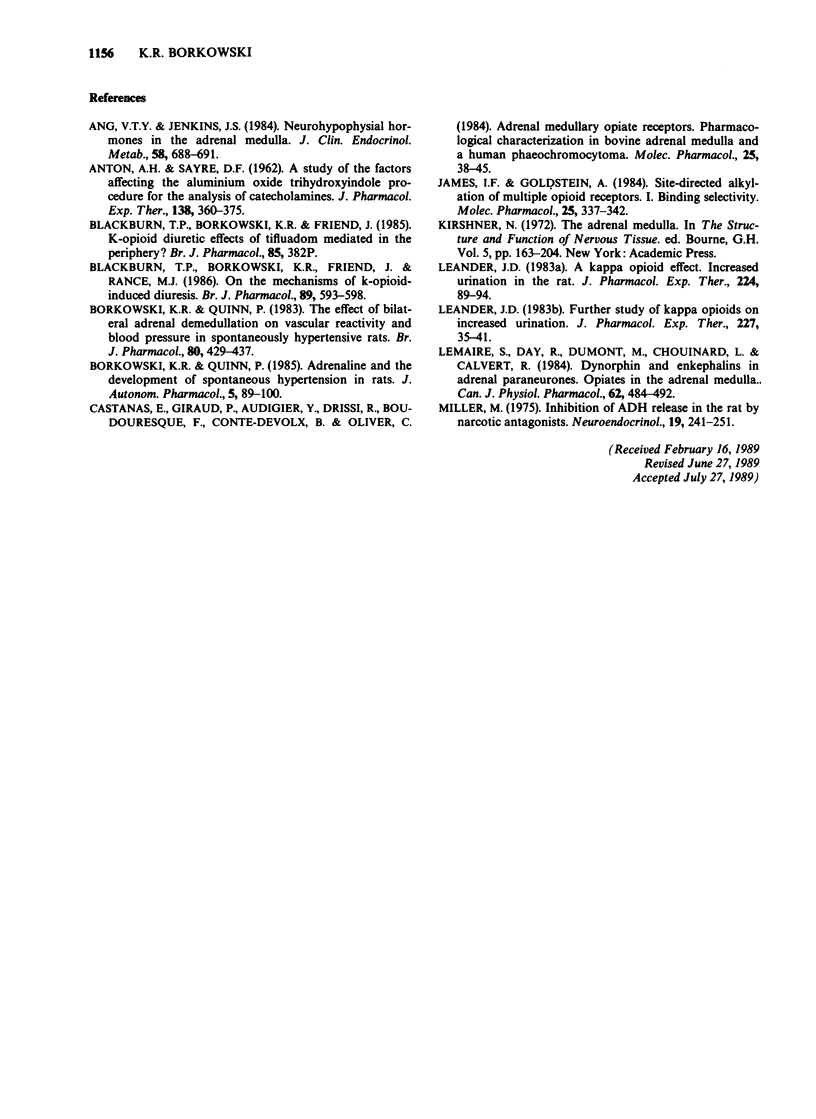
Selected References
These references are in PubMed. This may not be the complete list of references from this article.
- ANTON A. H., SAYRE D. F. A study of the factors affecting the aluminum oxide-trihydroxyindole procedure for the analysis of catecholamines. J Pharmacol Exp Ther. 1962 Dec;138:360–375. [PubMed] [Google Scholar]
- Ang V. T., Jenkins J. S. Neurohypophysial hormones in the adrenal medulla. J Clin Endocrinol Metab. 1984 Apr;58(4):688–691. doi: 10.1210/jcem-58-4-688. [DOI] [PubMed] [Google Scholar]
- Blackburn T. P., Borkowski K. R., Friend J., Rance M. J. On the mechanisms of kappa-opioid-induced diuresis. Br J Pharmacol. 1986 Nov;89(3):593–598. doi: 10.1111/j.1476-5381.1986.tb11160.x. [DOI] [PMC free article] [PubMed] [Google Scholar]
- Borkowski K. R., Quinn P. Adrenaline and the development of spontaneous hypertension in rats. J Auton Pharmacol. 1985 Jun;5(2):89–100. doi: 10.1111/j.1474-8673.1985.tb00109.x. [DOI] [PubMed] [Google Scholar]
- Borkowski K. R., Quinn P. The effect of bilateral adrenal demedullation on vascular reactivity and blood pressure in spontaneously hypertensive rats. Br J Pharmacol. 1983 Nov;80(3):429–437. doi: 10.1111/j.1476-5381.1983.tb10712.x. [DOI] [PMC free article] [PubMed] [Google Scholar]
- Castanas E., Giraud P., Audigier Y., Drissi R., Boudouresque F., Conte-Devolx B., Oliver C. Adrenal medullary opiate receptors. Pharmacological characterization in bovine adrenal medulla and a human pheochromocytoma. Mol Pharmacol. 1984 Jan;25(1):38–45. [PubMed] [Google Scholar]
- James I. F., Goldstein A. Site-directed alkylation of multiple opioid receptors. I. Binding selectivity. Mol Pharmacol. 1984 May;25(3):337–342. [PubMed] [Google Scholar]
- Leander J. D. A kappa opioid effect: increased urination in the rat. J Pharmacol Exp Ther. 1983 Jan;224(1):89–94. [PubMed] [Google Scholar]
- Leander J. D. Further study of kappa opioids on increased urination. J Pharmacol Exp Ther. 1983 Oct;227(1):35–41. [PubMed] [Google Scholar]
- Lemaire S., Day R., Dumont M., Chouinard L., Calvert R. Dynorphin and enkephalins in adrenal paraneurones. Opiates in the adrenal medulla. Can J Physiol Pharmacol. 1984 Apr;62(4):484–492. doi: 10.1139/y84-078. [DOI] [PubMed] [Google Scholar]
- Miller M. Inhibition of ADH release in the rat by narcotic antagonists. Neuroendocrinology. 1975;19(3):241–251. doi: 10.1159/000122444. [DOI] [PubMed] [Google Scholar]


